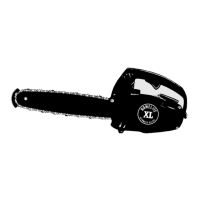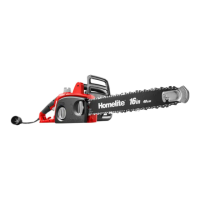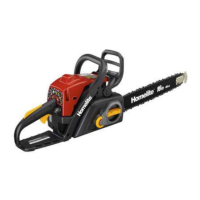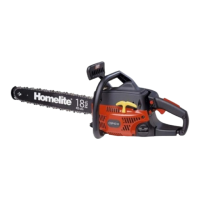BOR,NG
WTTH
TI]E 'I'OSE
Do not att'empt to bore
with the nose of
the bar until
you
have become
prolicient
in operating
the saw and are
sure
of
your
own capabilities
as well as those
of the saw.
Boring is something
resorted to only
when there
is no
better way
to make a cut.
lt may be necessary
to bore
when
some obstruction
-
another
tree or log, a
rock or
the
ground
-
prevents
you
from
placing
the long edge
of
the bar against the
wood. Boring
is
also
employed to
cut
"blind
holes"
such as
holes in
fenceposts or cut-outs
for log-cabin windows.
One
way to
minimize the danger
of the saw
kicking
back, is to
begin with an angular
cut,
making
contact
with the
wood
as
far back from the bar
nose as
possible;
when
lhis cut is deep
enough
to
be-
come
a
guide,
exert
downward
pressure
lo
bring lhe bar
gradually
into the
line
for
boring.
Then bore into
the
wood.
ANGLE THE
BAR
AND
CUT
INTO THE LOG AS IN #2
SITUATIONS
CAUSING
SAW BLADE
TO KICK
BACK
TOWARD
THE
OPERATOR
BORE STRAIGHT
INTO LOG THEN
CUT UP
OR DOWN
AS REOUIRED
DURING
REINSERTION INTO A
PREVIOUSLY
BEGUN
CUT,
WHEN TOP OR
NOSE OF BLADE
HITS BOTTOM OR SIDE
OF
THE KERF
(the
cut)
AVOIDING
KICK.BACK
lf
you
are cutting wilh the
nose
of
the bar,
you
must
be
extra careful
to
protect
against the
possibility
that
saw
may kick back. The saw will
kick back
any
time the top
section or upper
nose
section of
the rotating chain hits
any solid
object
such as the bottom of an
incompleted
previous
cut, the side of
the saw kerf as blade
is being
withdrawn,
or
wood when
you
are
trying to start a
boring
cut, or other
material next to
lhe log
you
are cutting.
'l
WHEN
INCORRECTLY
STARTING TO
BORE
t
{
t
1,
Remember
wood is heavy and that it bends or flexes. As
in such a
way that
the cut will open instead ol closing
you
cut through
a
log,
you
weaken
it
at the
cut
and it will
on the
bar. In addilion,
you
may
wish
to
avoid splitting
bend
there unless it is lying flat
on the
ground
and under
the wood
or stripping
off the bark. This can all be done
no stress.
To
avoid closingof the cut and
pinching
ol the
as shown
below.
NOTE: Wilh
large logs, insert
a
wedge
saw blade, therefore,
you
must cut a stressed log
or
limb
into the
cut to
hold it open.
STRESSED
LOG AND LIMB
SITUAT'O'i'S
STRESSED LOG
AND LIMB
SITUATIONS REOUIRING
TWO
CUTS TO AVOID
SPLITTING WOOD. STRIPPING
BARK,
OR PINCHING
SAW BLADE.
STRESS DIRECTION
+
/3'
1sl
CUT
)t,
dia'
LIMBS AND LOGS
SUSPENDED
WITH END
IN THE AIR
FINISHING
CUT: UNDERBUCK
STAND ON
UPHILL SIDE
WHEN CUTTING
BECAUSE
LOG
MAY
ROLL.
11
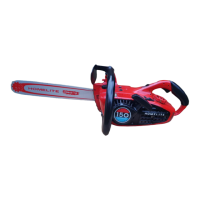
